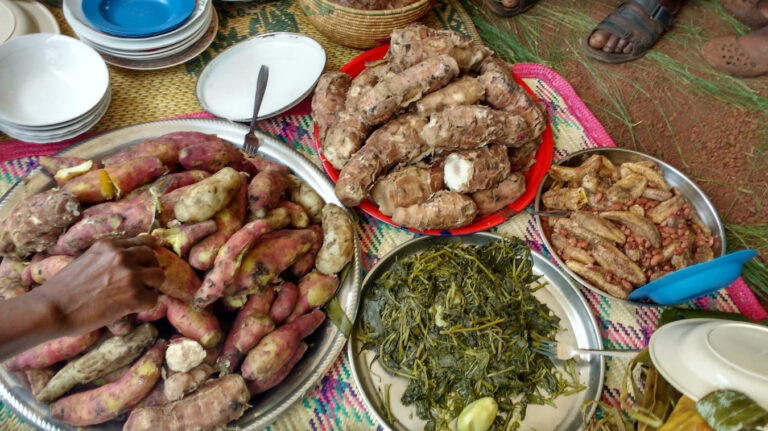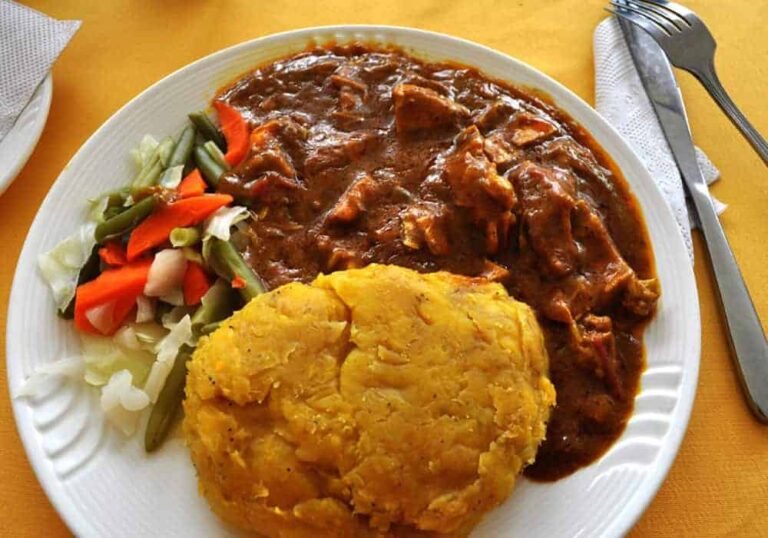Introduction: Uganda’s rich culinary heritage
Uganda, a country in East Africa, has a rich culinary heritage. The country’s traditional cuisine is based on indigenous ingredients such as plantains, cassava, yams, beans, and groundnuts. Ugandan cuisine is known for its simplicity and use of natural ingredients. Over the years, Ugandan cuisine has been influenced by various cultural groups, including the British, Indian, and Arab.
Ugandan dishes are characterized by their use of spices, particularly chili and ginger. The dishes are also generally rich in carbohydrates, reflecting the country’s agrarian heritage. Ugandan cuisine is diverse, with different regions of the country having their own unique dishes and cooking styles.
Matoke: Uganda’s national dish
Matoke is Uganda’s national dish and is made from green plantains that are boiled and mashed. The plantains are first peeled and then steamed in banana leaves until they are soft. The mashed plantains are then mixed with onions, tomatoes, and other spices to create a savory dish. Matoke is often served with vegetables, meat, or fish, and is a staple in many Ugandan households.
Matoke is not only a delicious dish but is also a symbol of Ugandan culture. The dish is usually served at important cultural events such as weddings and funerals. Matoke has gained popularity beyond Uganda, with many restaurants in East Africa featuring the dish on their menus.
Luwombo: A steamed delicacy
Luwombo is a traditional Ugandan dish that is steamed in banana leaves. The dish is made from a variety of ingredients, including chicken, beef, fish, or mushrooms, which are marinated in spices and wrapped in banana leaves. The wrapped ingredients are then steamed over low heat, allowing the flavors to infuse and create a delicious aroma. Luwombo is usually served with a side of steamed rice or Matoke.
Luwombo is a delicacy that is usually reserved for special occasions such as weddings and other celebrations. The dish is popular in central Uganda but is also enjoyed in other parts of the country. Luwombo is not only delicious but also a healthy dish, as it is low in fat and high in protein.
Ugali: A staple of many African diets
Ugali is a staple food in many African diets, including Uganda. The dish is made from maize flour and water, which are mixed and cooked over low heat until the mixture forms a thick paste. Ugali is often served with traditional stews or soups made from meat, fish, or vegetables.
Ugali is an affordable and filling food that has sustained many African communities for generations. The dish is rich in carbohydrates and provides energy to people who engage in physically demanding activities such as farming.
Rolex: A popular street food
The Rolex is a popular Ugandan street food that has gained popularity in recent years. The dish is made from a rolled chapati filled with an omelet made from eggs, onions, tomatoes, and chili. The dish is often served with a side of tomato or chili sauce.
Rolex is a popular breakfast food in Uganda, and it is common to see street vendors selling the dish in the early morning. The dish is affordable and easy to prepare, making it a favorite among students and workers.
Conclusion: Sampling Uganda’s diverse cuisine
Ugandan cuisine is diverse and reflects the country’s cultural heritage. From Matoke to Luwombo, Ugandan dishes are delicious and nutritious. Whether you are a tourist or a local, there are many traditional Ugandan dishes to try. Sampling the country’s diverse cuisine is an excellent way to discover the unique flavors and aromas of this East African nation.










